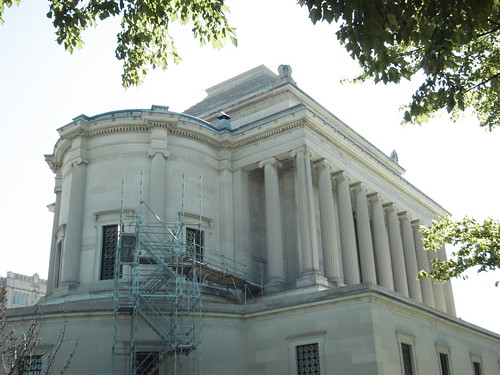
Image : http://www.flickr.com
Spanish revival architecture is hugely popular in California, and increasingly across the nation. The mission revival style and colonial revival styles grew in popularity at the beginning of the 20th century, but people today still chose to emulate the Spanish style when building their homes and public establishments. Why do people continue to use this Spanish style? I argue that the Spanish colonial style represents the very beginnings of the United States on the west coast, and this time in the US history continues to spark people's imaginations. The aesthetic elements are iconic, and people still commission architects to create the homes of their dreams in this style.
The Spanish Colonial Revival style was created in the United States in the 20th century, and it was sparked after the opening of the Panama Canal. The novel Ramona also had a great influence on the popularity of this architectural style. The early Spanish colonies of North and South America had their particular style of architecture brought from the homeland, and this style was them updated to accommodate the new century in the US. Between 1915 and 1931 this style was all the rage, and movie stars in Hollywood clamored to get their Hollywood hills homes built in this style. Mostly the single-level detached home saw this style. On a personal note, my own grandmother has one of these homes in California, and it's pink!
The Spanish Colonial Revival style is very similar to the Spanish Mission Revival style, but with a few key differences. It's also similar to the pueblo styles of the west and southwest, and influenced as well by the arts and crafts movement that was the foundation of these architectural styles. The iconic use of smooth plaster, stucco walls, and chimney finishes, clay tile roofs, terra cotta and concrete ornaments is still a highly noticeable, recognizable style. Other elements include porches and balconies, and Roman arcades and fountains. You'll also see canvas awnings. The most important Spanish Revival architect in California was George Washington Smith who practiced during 1920's and 1930's. Perhaps his most famous house is the Steedman House in Montecito, CA, now a museum called the Casa del Herrero.
But there are other architects who took this Spanish style across the globe. Take for example a lovely Spanish Revival building in St. Louis, by the architect T.P. Barnett, son of George I. Barnett; another famous architect in St. Louis. The T.P. Barnett building is particularly interesting because it also has Art Deco influences, making it one of the most unique buildings in the Grand Center region of St. Louis. Certainly the next time you're in St. Louis, you need to visit this Spanish Revival building on Washington Avenue.
Mark Bradley is a real estate historian and investor. Specializing in renovating historic architecture. For a 15 page historic report on Mark's Spanish Mission Building at 3207 Washington Ave St Louis Mo 63103 go to: 3207washington.com